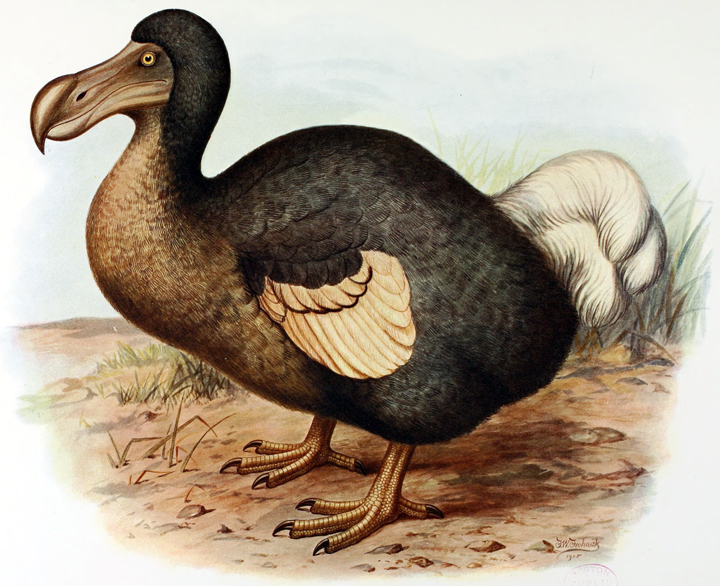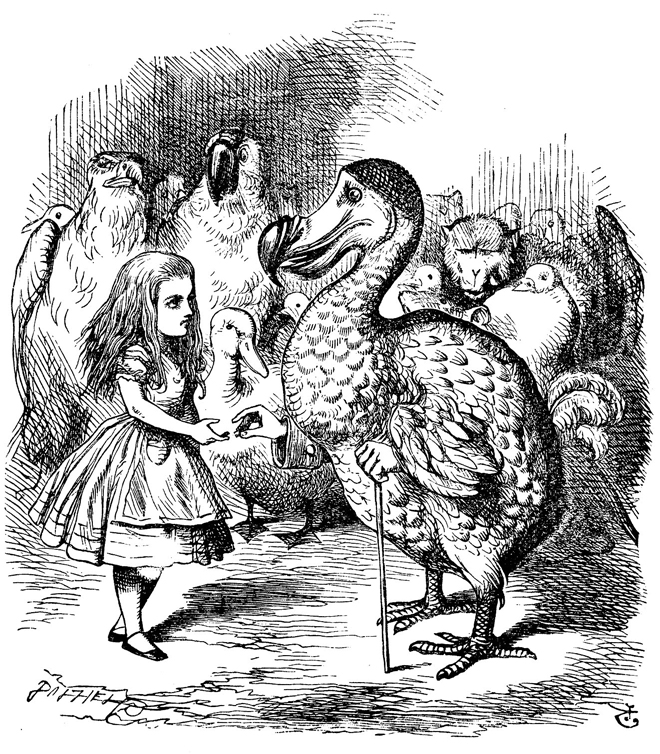Dodos: Trusting Maybe, But Not Stupid
New scans of an old specimen indicate that the extinct birds were probably at least as clever as pigeons.
By Vicki Croke
Dodos are thought to have been a little over 3 feet tall and to have weighed anywhere from 23 to 47 pounds. Many illustrations of the birds were not done from live specimens, so there can be some dispute about their appearance and coloring. It’s also thought that some drawings are from captive birds who were overfed. Plate 24 from Extinct Birds (1907) by Walter Rothschild.
Our culture has come to equate this species’ name with stupidity. But dodos, the large, big-beaked and flightless birds from the Indian Ocean’s Mauritius Island don’t deserve it. Yes, it’s true that the birds who hadn’t seen humans before showed no fear of the sailors who landed on their previously uninhabited island starting in the late 1500s. And it’s true that by 1662, the poor birds had been hounded into extinction by hungry people and introduced animals. But new, just-released research helps right a wronged reputation.
According to the American Museum of Natural History, which led the study, dodos were probably “actually fairly smart.” The paper, led by scientists from AMNH and published in the Zoological Journal of the Linnean Society, Tuesday, reveals that relative to body size the dodo “was on par with its closest living relatives: pigeons—birds whose ability to be trained implies a moderate level of intelligence.”
Many readers have been introduced to the dodo through the illustrations in “Alice’s Adventures in Wonderland.” John Tenniel, 1865.
The problem started in the late 1500s when the island was discovered. “The dodos living there had no fear of humans and they were herded onto boats and used as fresh meat for sailors,” Eugenia Gold, the lead author of the paper, said in a statement. “Because of that behavior and invasive species that were introduced to the island, they disappeared in less than 100 years after humans arrived. Today, they are almost exclusively known for becoming extinct, and I think that’s why we’ve given them this reputation of being dumb.”
Gold, who is a research associate and recent graduate of the American Museum of Natural History’s Richard Gilder Graduate School, and an instructor in the Department of Anatomical Sciences at Stony Brook University, knew that even parts of dodo specimens are rare (museum displays are often constructed models). But she and her colleagues tracked down a dodo skull in good condition from the Natural History Museum of London.
A museum worker with a dodo skeleton opposite a reconstructed model, National Museum of Wales, Cardiff, 4th March 1938.
That skull along with those of pigeons and a close relative of the dodo, the extinct Rodrigues solitaire, were examined using high-resolution computed tomography (CT) scanning. “Virtual brain endocasts,” or representations of the interior skull spaces, “were built to determine the overall brain size as well as the size of various structures.” The scientists then compared the dodo to the others.
“It’s not impressively large or impressively small—it’s exactly the size you would predict it to be for its body size,” Gold said. “So if you take brain size as a proxy for intelligence, dodos probably had a similar intelligence level to pigeons. Of course, there’s more to intelligence than just overall brain size, but this gives us a basic measure.”
Not exactly a greenlight for membership in an avian honor society, but still, a little bit of justice for a much-bullied bird.




4 Responses to “Dodos: Trusting Maybe, But Not Stupid”
Is it not yet possible to clone a Dodo using DNA from its bones?
The stupid ones were the humans who killed them off.
Dodo=Life
Dodo’s are so cute
Comments are closed.